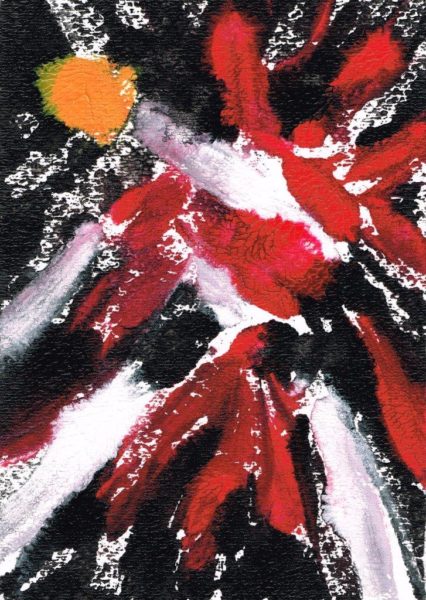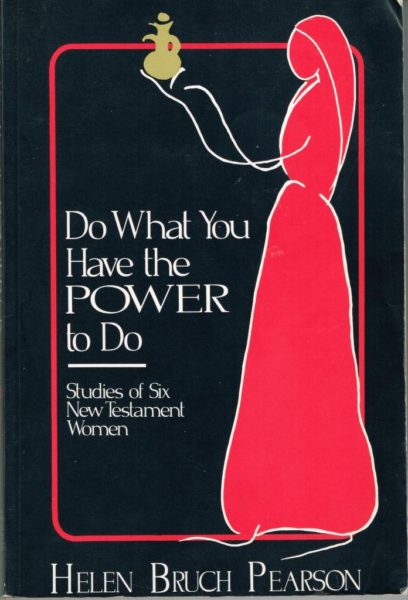 It’s no secret that I actively search out books that explore the historical and biblical importance of women and particularly those stories that describe their active participation in building the Reign of God. In many cases, women in the Bible have been marginalized, located at a distance from the central actions described in biblical narratives so that you sometimes need to read between the lines. And in the New Testament, women are often hidden from view, relegated to servile, behind-the-scenes roles that supported Jesus and other leaders in early Christianity. On the other hand, we also have stories of significant New Testament women who do what they can with what they have. And Jesus always seems to be going out of his way to talk to women, even if their names have not always been carried down to us.
It’s no secret that I actively search out books that explore the historical and biblical importance of women and particularly those stories that describe their active participation in building the Reign of God. In many cases, women in the Bible have been marginalized, located at a distance from the central actions described in biblical narratives so that you sometimes need to read between the lines. And in the New Testament, women are often hidden from view, relegated to servile, behind-the-scenes roles that supported Jesus and other leaders in early Christianity. On the other hand, we also have stories of significant New Testament women who do what they can with what they have. And Jesus always seems to be going out of his way to talk to women, even if their names have not always been carried down to us.
So, whenever I am asked for book recommendations related to women in the scriptures, I always include near the very top of my list “Do What You Have the Power to Do.” This fabulous book by Helen Bruch Pearson breaks open the stories of six unnamed women in the gospels who encounter Jesus and are forever changed.
In the first chapter, titled “The Power to Break the Silence,” Pearson explains that her motivation is to investigate the texts using the tools of theology and historical imagination, retelling the stories of the six women in a new way. The women who are included are: the woman who anointed Jesus, the bent-over woman, the woman who was insistent with Jesus, the hemorrhaging woman, the woman accused of adultery, and the woman at the well.
Pearson uses a structure such that each chapter is broken into six different sections. The Anticipation section serves as an introduction to each woman, the Exploration section presents background information about the history and culture of the time, bringing in some discussion of the Bible as literature, and the Meditation section uses “historical imagination and creative revisioning” to retell the story from the woman’s perspective. Then there is the Encounter section, which introduces additional resources and questions for reflection and there is the Interrogative section that includes more commentary and provides open-ended questions for discussion or journaling. These Encounter and Interrogative sections both address questions related to how the stories of the women apply to us as individuals as well as to how our interaction with society is impacted by the stories. Finally, the Where Two or Three are Gathered section contains prayers and other suggestions that can be used in a simple ritual, if you are studying this book with a group.
In addition to adding her insight to these women’s stories, Pearson provides an analysis, an examination of what the word “power” means, specifically in the case of the woman who anointed Jesus. In Mark 14:6-9, after the anointing, Jesus responds to the criticism of the others at the table by saying, “She has done what she could. She has anointed my body and is preparing it for burial. The truth is that wherever the good news is proclaimed throughout the world, what she has done will be told in her memory.” Here is the quote from Pearson I plan to use in the book I am compiling and the artwork that I made to go with it. Even though it’s been over 25 years since I first read this book, her insightful analysis of power still affects me with its brilliant clarity and – well – power. Pearson writes:
 We remember [the woman who anointed Jesus] because this unnamed woman confronts us still. She will not let us take the easy way out. She remains a model for us because she was not afraid to give what was uniquely hers to give. In remembering her, we are challenged to do what we have the power to do. It may be only a little thing that we can do – or it may be much. This is not even the question. To do what we have the power to do is more than enough. It is everything God asks…
We remember [the woman who anointed Jesus] because this unnamed woman confronts us still. She will not let us take the easy way out. She remains a model for us because she was not afraid to give what was uniquely hers to give. In remembering her, we are challenged to do what we have the power to do. It may be only a little thing that we can do – or it may be much. This is not even the question. To do what we have the power to do is more than enough. It is everything God asks…
Power is a gift from God. God does not intend a world where the powerful suppress and oppress the powerless. Power is not meant to be the possession of a few while the majority are impoverished. Power, given by God, is meant to be shared by all.
Helen Bruch Pearson (1992)
This is a direct challenge to us all to do what we are called to do – what we uniquely have in our power to do in this world. I like that this is focused down from an attitude of listening and doing, rather than inaction and worrying about all the myriads of things we are not doing. Just mindfully doing what we have the power to do is all that God asks of us. Let’s get busy.
Just another quick note. The government shutdown is finally over, so I will be heading back to work on Monday. January blessings to you all!
Reference 1: Pearson, Helen Bruch, “Do What You Have the Power to Do: Studies of Six New Testament Women,” Upper Room Books, Nashville, TN, 1992.
Reference 2: Mark 14:6-9, “The Inclusive New Testament,” Priests for Equality, Brentwood, MD, 1994.
Image 1: “Do What You Have the Power to Do,” Julie Henkener, 2019.
Image 2: Do What You Have the Power to Do, cover design by Cindy Helms.















3 Comments
Leave your reply.